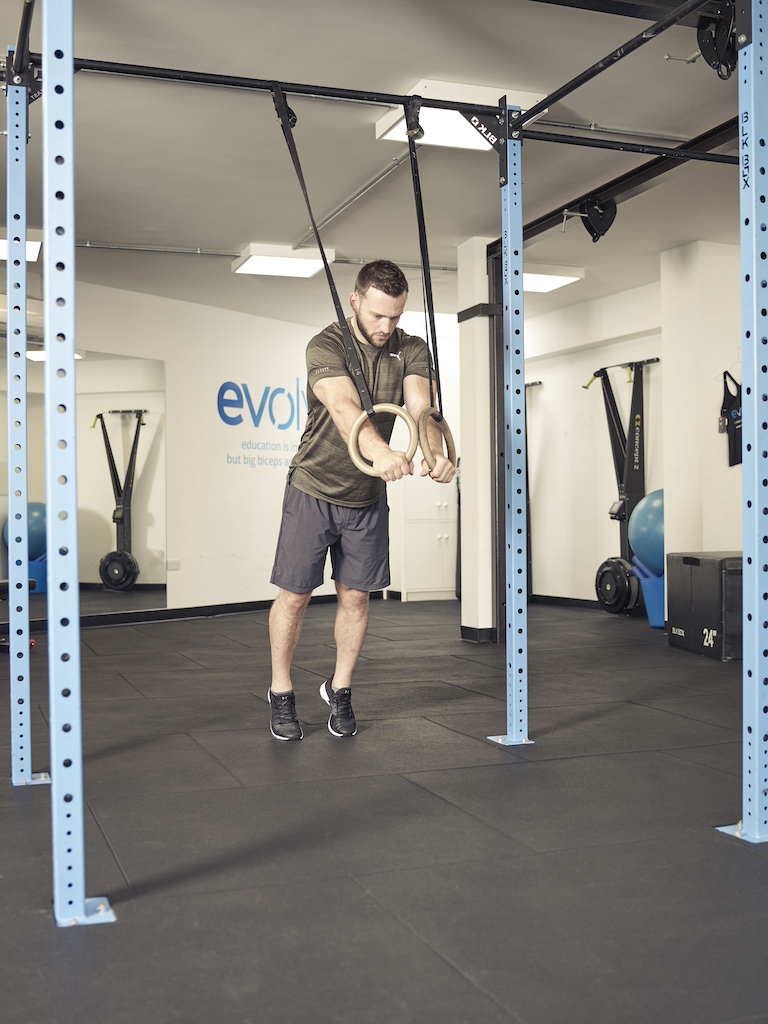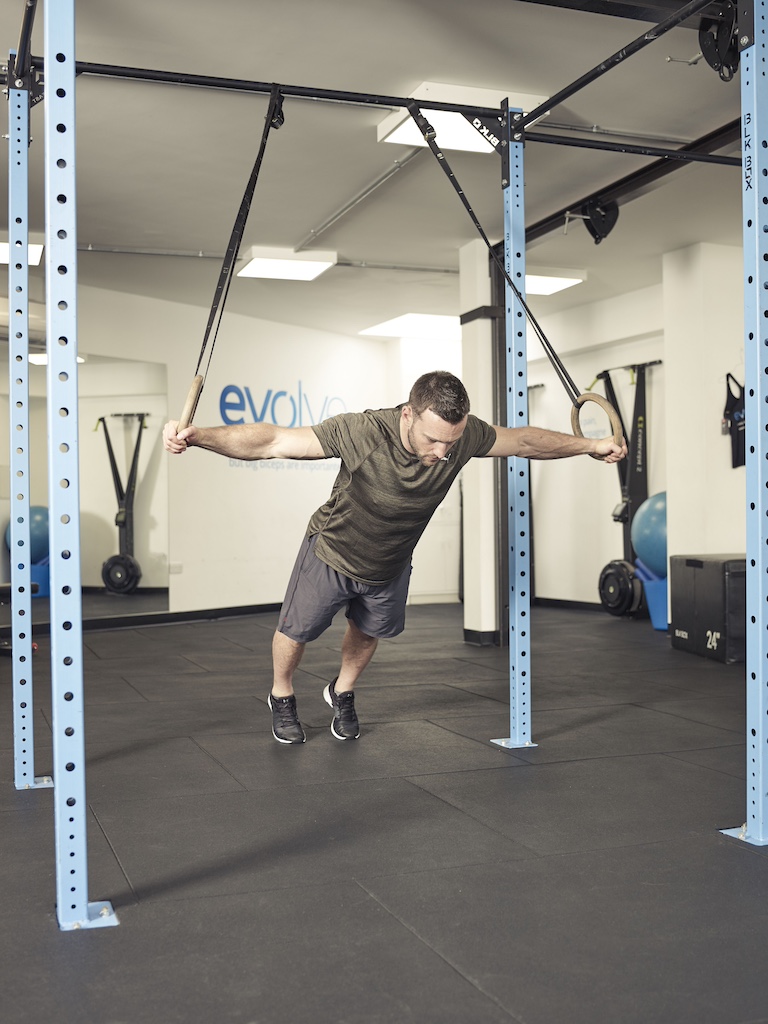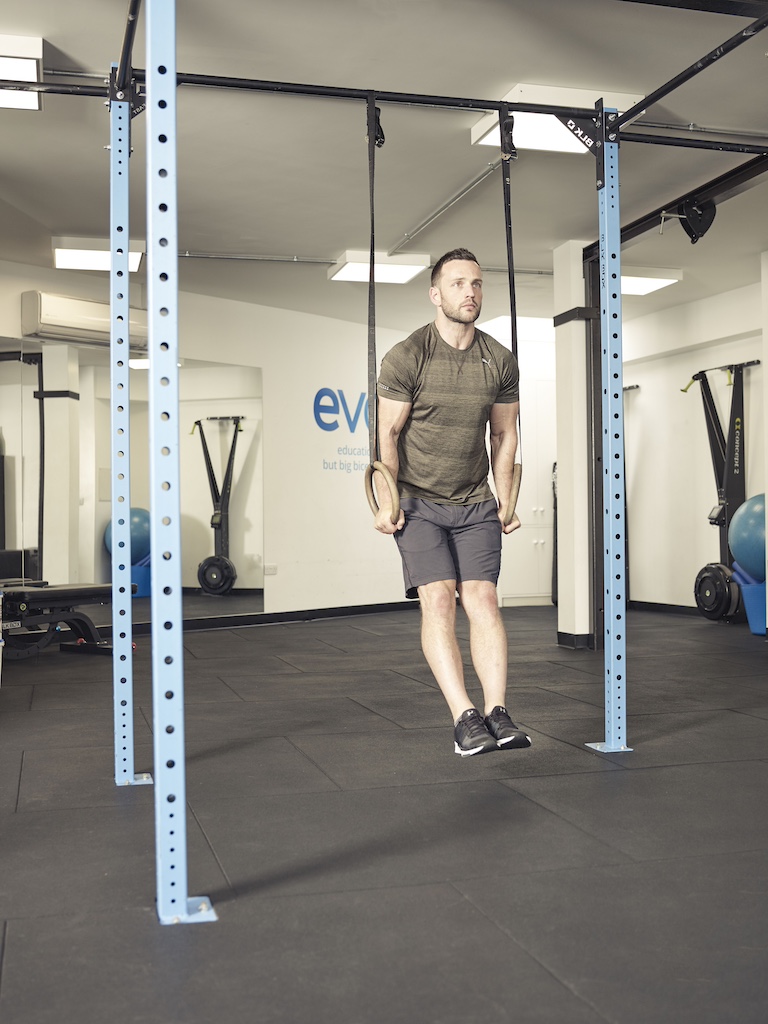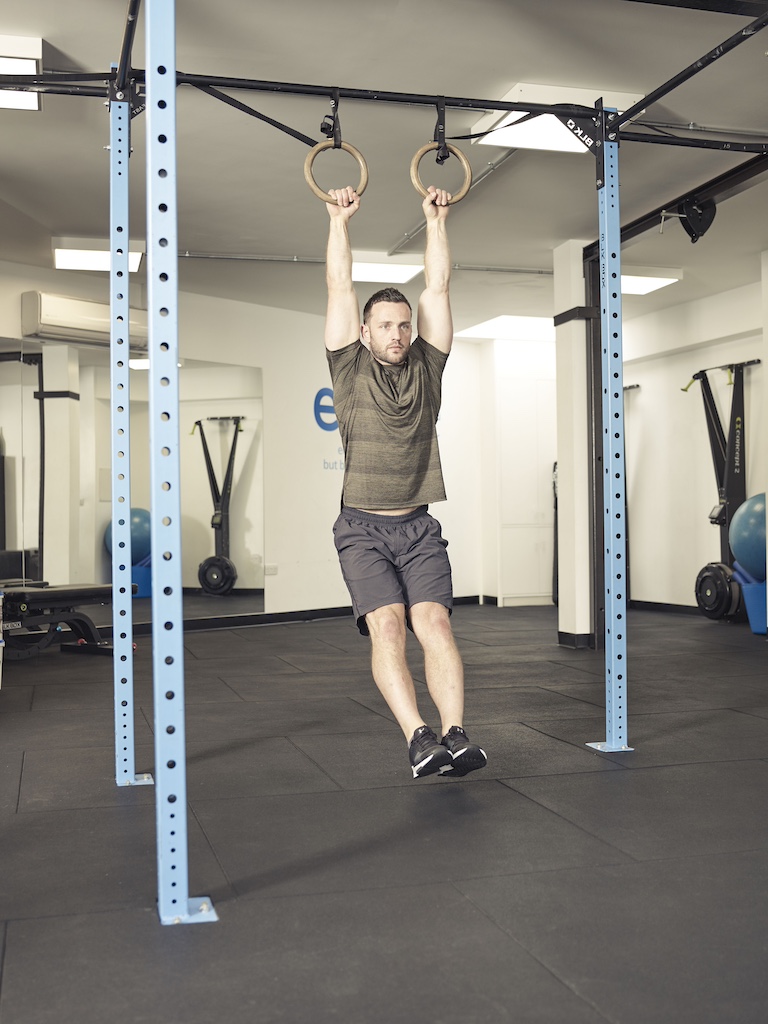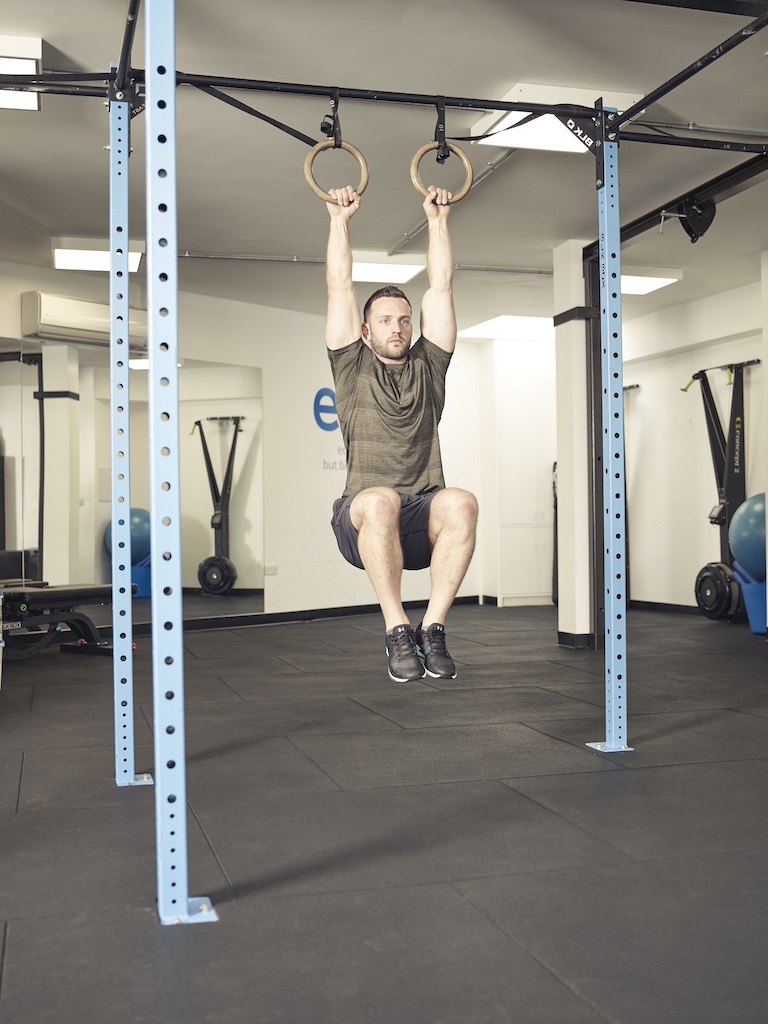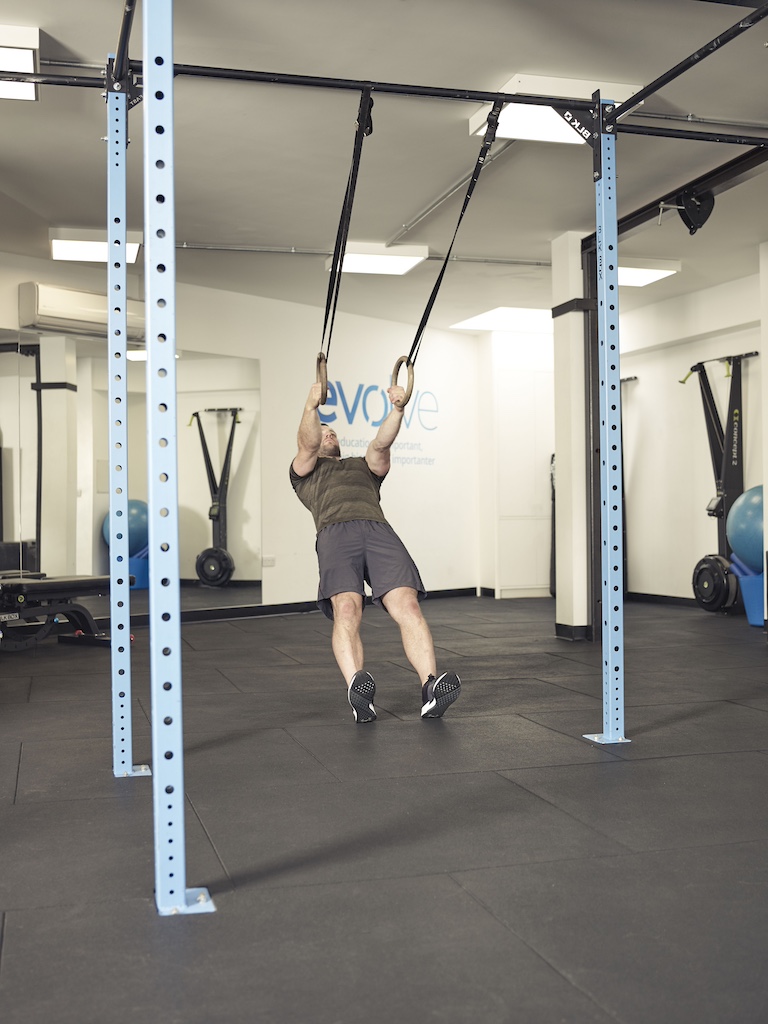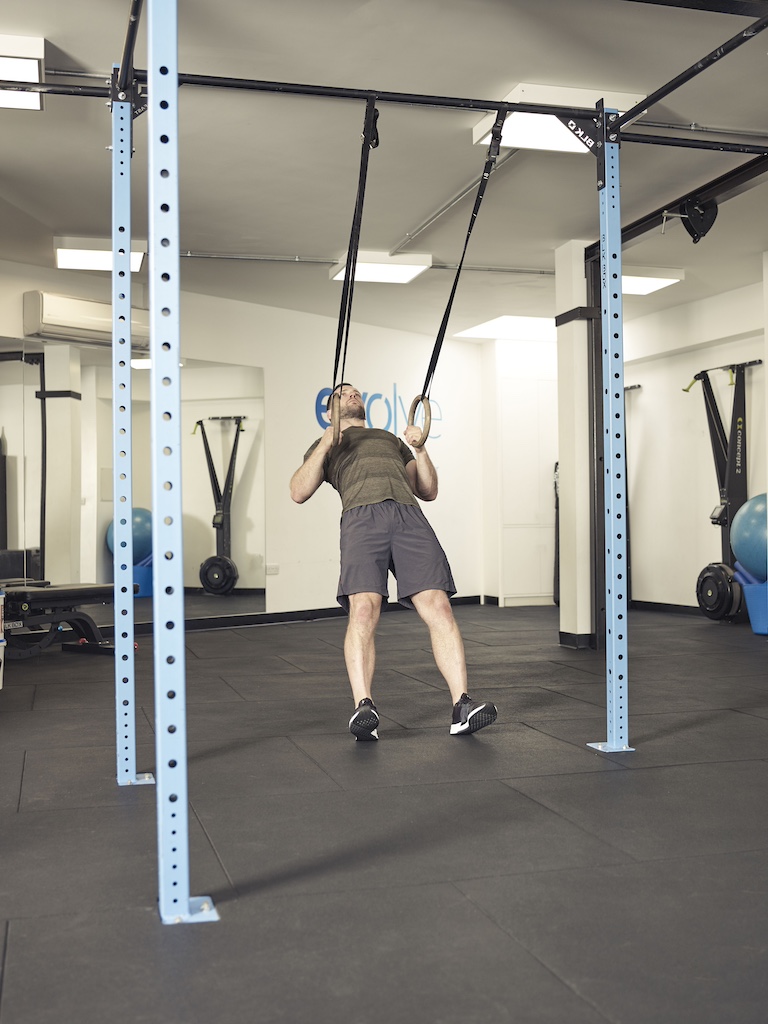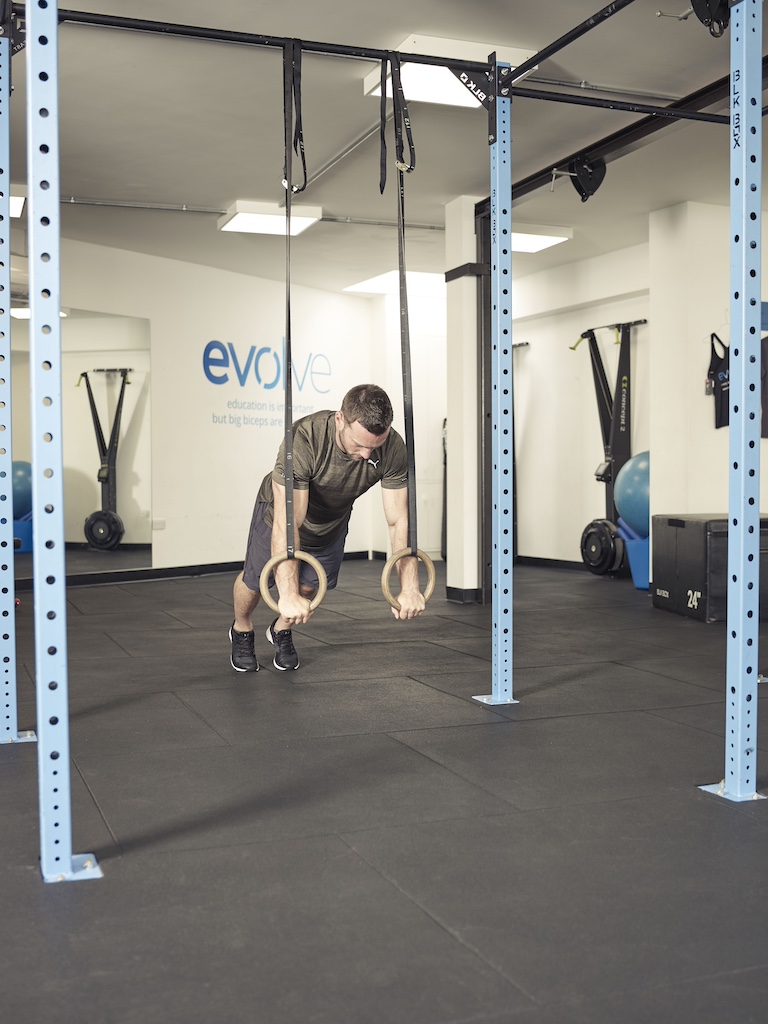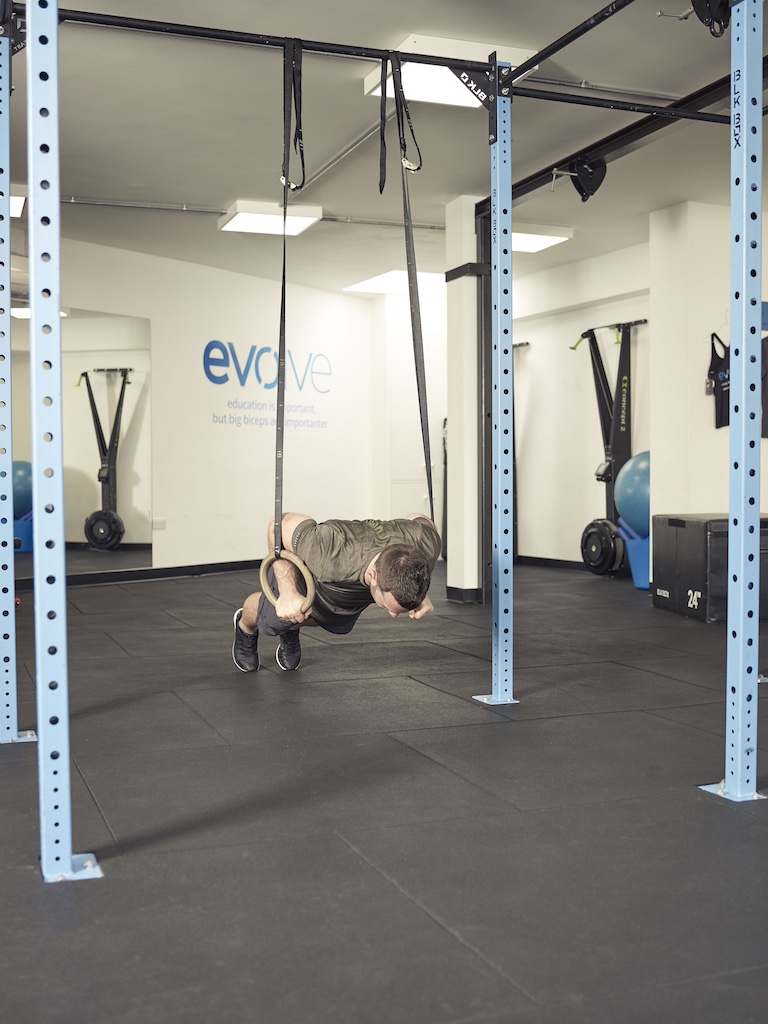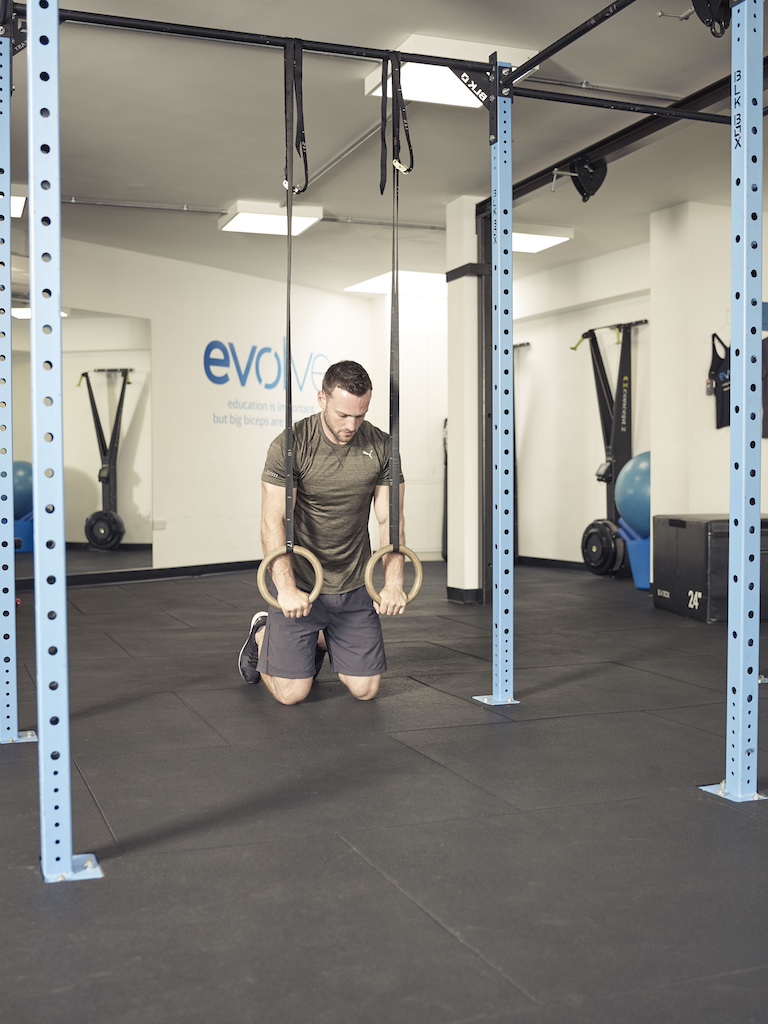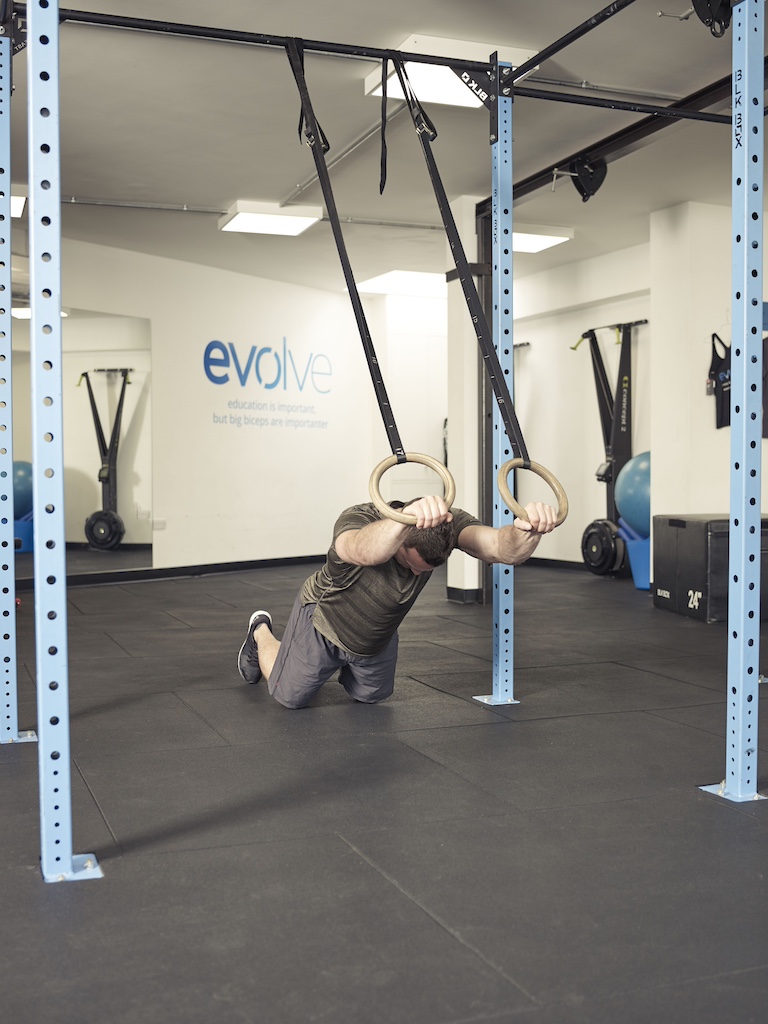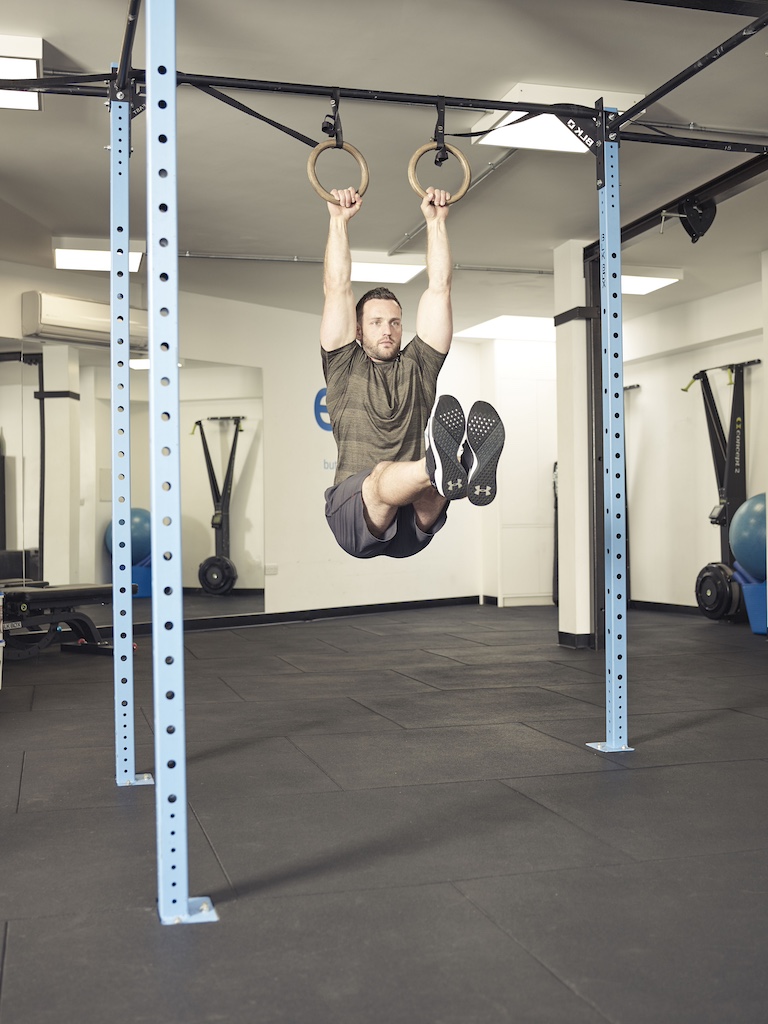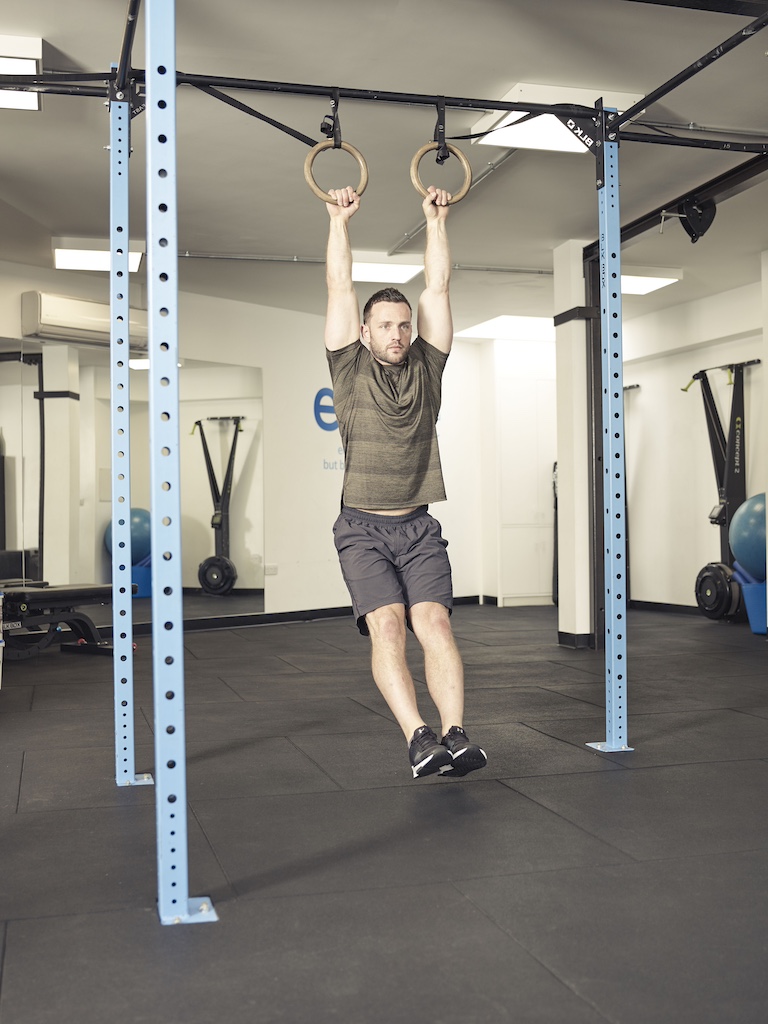Carve a core of steel with these suspension trainer abs exercises…
Sure, doing endless crunches on your best exercise mat will build your core to some extent. However, if you want to take it to the next level, suspension training allows your whole body to strengthen as a unit, and while the larger muscles are the main targets, your smaller, stabilising muscles are also being engaged. That means that by developing your entire body, you’re reducing any weak points in the system and improving both efficiency and movement.
The more muscles recruited at once, the greater the calorie burn, so these exercises have the double benefit of building core strength and helping you to lose the stubborn belly fat that covers your abdominals.
NOTE: We’ve used ring attachments in the exercises that follow, but you can use whatever handles equipped to your suspension trainer straps.
Our favourite suspension trainer abs exercises
1. Flye with suspension trainer
Difficulty: 2/5
Main targets: Chest, abs, core
Benefits: This move puts your pecs under constant tension, while providing a jolt to your core and biceps. Superset it with suspension push-ups for a guaranteed chest-builder.
How to do flyes with a suspension trainer:
• Stand tall, holding the rings with your palms facing in.
• Lean forward, allowing your arms to come out to your sides to form a T-shape, keeping a slight bend in your elbows.
• Bring your arms back in to finish the move.
2. Ring hold
Difficulty: 2/5
Main targets: Entire core
Benefits: Learning to stay stable and create tension helps you deal with the instability of the rings. This is one of the best suspension trainer abs exercises, because it will teach you to create locked-out strength in more advanced positions.
How to do a ring hold:
• Jump into the top position of a dip: elbows locked, rings close to your body.
• Hold for a second, then turn your hands outwards to feel the extra tension.
• Turn back in and repeat for as long as you can.
3. Hanging knee raise with suspension trainer
Difficulty: 3/5
Main targets: Lower abs
Benefits: As well as targeting your abs, this move works your grip, forcing you to stabilise yourself in the hang position while the rings move slightly.
How to do a hanging knee raise with a suspension trainer:
• Hang from the rings.
• Bend your knees and use your lower abs to raise your legs until your thighs are paral-lel to the floor.
• Lower slowly back to the start.
4. Inverted row with suspension trainer
Difficulty: 3/5
Main targets: Back, biceps, abs, core
Benefits: As well as working your abs, this move will engage your shoulders and keep them healthy, while allowing your wrists to rotate naturally to reduce strain on your elbows.
How to do an inverted row with a suspension trainer:
• Hold the rings and lean back, keeping your body in a straight line.
• Focus on pulling your elbows behind you as you pull up to the rings.
• Lower back to the start under control.
5. Plank with suspension trainer
Difficulty: 3/5
Main targets: Entire core
Benefits: If you can do more than two minutes of the regular plank, it’s time to add instability. This move will work every part of your body but especially your core, which it’ll put in overdrive.
How to do a plank with a suspension trainer:
• Hold the rings with your feet on the floor, leaning forward into the top position of a press-up.
• Brace your abs and glutes so that your body’s straight, and hold.
6. Push-up with suspension trainer
Difficulty: 3/5
Main targets: Chest, triceps, core
Benefits: It’s much harder than the regular version, though keeping the rings close will help. The ring press-up will also put extra emphasis on your abs, working your core from all directions.
How to do a push-up with a suspension trainer:
• Grasp the rings, lean forward and lower until their edges touch your armpits, then push up.
• As you improve, lower the rings (or put your feet on a box) until you’re closer to the angle of a standard push-up.
7. Kneeling roll-out with suspension trainer
Difficulty: 4/5
Main targets: Entire core
Benefits: Slightly tougher than regular roll-outs (using an ab roller), this move lets you adjust the difficulty by moving the rings up or down. The closer you get to the floor, the harder it gets.
How to do a kneeling roll-out with a suspension trainer:
• Kneel holding the rings at waist height.
• Lean forward, keeping your body in a straight line, and allow your arms to rise so they finish above your head.
• Brace your abs and pull the rings down to return to the start position.
8. L-sit with suspension trainer
Difficulty: 4/5
Main targets: Entire core
Benefits: This isometric move will build your functional abs strength. If it’s too hard to start with, do it with your legs tucked.
How to do an L-sit with a suspension trainer:
• Hang from the rings.
• Bring your legs up until they’re parallel to the floor, brace your abs and hold.
• Tucking forward slightly will help with your balance.
9. Hanging leg raise
Difficulty: 5/5
Main targets: Lower abs
Benefits: Because it’s much tougher on the abs than the knee raise, it’s those that are more likely to hit failure on this before your grip goes. For the ultimate challenge, go to failure, then do a few more reps of knee raises.
How to do a hanging leg raise with a suspension trainer:
• Hang from the rings.
• Use your lower abs to raise your legs until your thighs are parallel to the floor.
• Lower slowly back to the start.
• Avoid swinging – keep your abs tensed throughout to remain stable.


